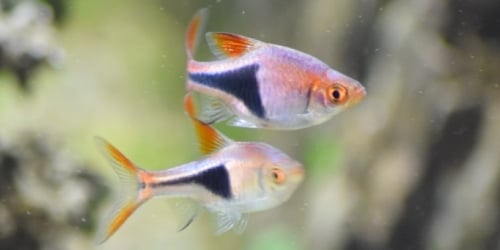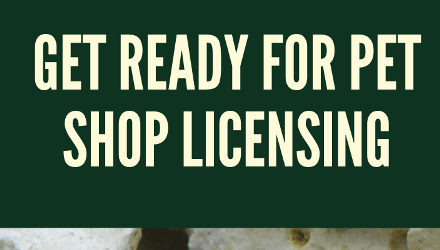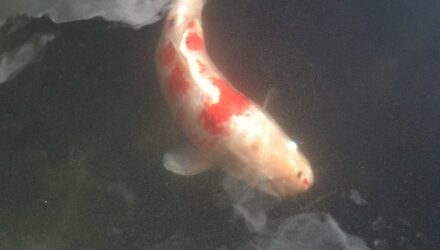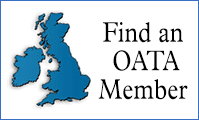OATA has welcomed a recent report from the Scottish Animal Welfare Commission (SAWC) that calls for a Code of Practice for farmed and ornamental fish. However, we have also raised concerns about some of the recommendations put forward in the report.
The SAWC’s document, Ascribing Sentience to Fish: Potential Policy Implications, was published without input from OATA—despite referencing OATA’s contributions to previous inquiries, such as its work on exotic pets.
OATA supports the report’s recognition of fish as sentient beings and is pleased to see growing awareness of their welfare needs. However, we are urging caution over a one-size-fits-all approach that treats fish welfare identically to that of air-breathing animals.
“We welcome that fish’s welfare needs are being properly recognised, but they require a different approach to other animals, particularly when it comes to transport,” said Dr Matthew Bond, OATA’s Deputy Chief Executive.
The SAWC report recommends welfare impact assessments for fish, but the methods it references are geared toward commercial fishing—making them unsuitable for ornamental species kept in home aquariums.
Another major concern is the report’s suggestion to measure and monitor fish by number rather than weight. While this may make sense for some settings, it presents significant challenges, particularly for the ornamental industry.
“Licensed pet shops are already required to record fish mortalities by number, but we believe applying this across the ornamental fish industry would be difficult and nigh on impossible for commercial food fisheries,” Dr Bond added.
OATA’s Commitment to Fish Welfare
OATA has long assumed that all fish are sentient, even before the UK’s Animal Welfare (Sentience) Act 2020 formally included them. The organisation’s policies, guidance, and advice are built on this foundational belief.
It’s frustrating that the high welfare standards within the ornamental aquatic trade are often overlooked. We work closely with vets and scientists to ensure our practices reflect the latest understanding and best practice.
OATA is ready and willing to contribute to a meaningful Code of Practice for Ornamental Fish. In fact, the organisation has already begun work on a draft version of such a document and is open to sharing it as part of the ongoing dialogue.
Main points in OATA's response to the Scottish Animal Welfare Commission's report into fish sentience
Page 21:
“1. Given that fish are sentient, their welfare needs should receive the same consideration in the formulation and implementation of policy as those of terrestrial vertebrate species.”
While we support this recommendation in principle – the differences between aquatic and terrestrial vertebrates cannot be overstated. Often, a completely different approach needs to be taken when considering aquatic vertebrates, for example in transport requirements. Our Transporting Aquatic Livestock Code covers the legal requirements of planning a journey, handling during transit all the way through to unpacking upon delivery and deciding when a fish is fit for sale.
The packing requirements outlined in our Code adhere to the standards set out in the International Air Transport Association’s Live Animal Regulations (LAR). This is important because only trained or experienced individuals should handle the packing and unpacking of fish. Unlike air-breathing animals, fish are highly susceptible to harm if disturbed during transport.
Page 22:
“7. In circumstances where the Scottish Government has identified that its policy may have an adverse effect on animal welfare, and where there may be an impact on the welfare of fish, it should undertake and publish the results of a welfare impact assessment in order to identify the nature and extent of the possible adverse effect.”
Measuring welfare in ornamental fish as part of an impact assessment is not a straightforward process. There is currently no universally agreed upon methodology beyond ensuring the five welfare needs are met, as set out in the Animal Health and Welfare (Scotland) Act 2006. The Qualitative Behavioural Assessment (QBA) mentioned in the report, like most examples of captive fish welfare monitoring, is primarily focussed on commercial food fish farming. Ornamental fish require a different approach due to many factors including, but not limited to:
- The vast number of species in trade (upwards of 3,000) and the associated variety in their behaviours, lifespans/cycles and water quality/enrichment requirements.
- Complex mixed species-assemblages affecting interactive behaviours.
- Knowledge of the assessor.
- Availability of equipment – many food fish farms rely on complex lab testing and/or large-scale water sampling which is not realistic for the ornamental trade.
One potential way forward could be via the use of Operational Welfare Indicators (OWI’s), as proposed for use in ornamental fish by Jones et al., (2021). OWI’s can be either behavioural (latency to feed, prevalence of displays, neophobia etc) or non-behavioural (ventilation rate, find condition, changes in colouration etc) and have been developed to be fit for purpose and realistic for industry use.
Page 22:
“8. Since fish are sentient individuals, monitoring and measurement of fish exploitation should be done in terms of numbers rather than weight.”
This would be difficult to achieve for the ornamental industry, but nigh on impossible for commercial food fisheries. Research conducted by CEFAS examined ornamental trade data extracted from packing notices on consignments crossing the UK border and produced an estimate on the number of fish per kilogram of freight weight. However, invariably these estimates can only offer a snapshot over a given time in a specific country. Retail stores are legally required to monitor the number of animals under their care (via stock takes) and record any instances of mortality – The Animal Welfare (Licensing of Activities Involving Animals) (Scotland) Regulations 2021.
Page 22:
“10. Statutory Codes of Practice or Scottish Government guidance for the welfare of farmed and ornamental fish should be established, to include similar issues as for other terrestrial species, such as health, water quality, enrichment, familiarity, stocking density, pain relief, handler competence, and monitoring.”
Our industry trades in live, healthy animals and has a vested interest in treating each fish as an individual. This is further evidenced by the stark difference in the value of ornamental fish when compared to food fish. One tonne of tuna fished in the Maldives was valued at $1,583 per tonne, whereas their live ornamental fish exports were valued at $590,000 per tonne (Watson & Roberts, 2015).
Our members sign and adhere to our Code of Conduct which covers a wide range of standards which we expect them to meet. These standards go above and beyond what is legally required and cover animal welfare, medicines and transport, water quality/testing and staff training, among others. Aspects of our guidance have been used in the development of Statutory guidance regarding Selling animals as pets under The Animal Welfare (Licensing of Activities Involving Animals)(Scotland) Regulations 2021. Our input ensured this guidance recognised fish as separate to terrestrial vertebrates and treated them accordingly. The water quality parameters stated in the Government guidance is taken directly from our Water Quality Criteria document.
We recognise the value in these statutory guidance documents, which exist for dogs and reptiles, and would welcome playing our part in creating a similar one for pet fish.
















